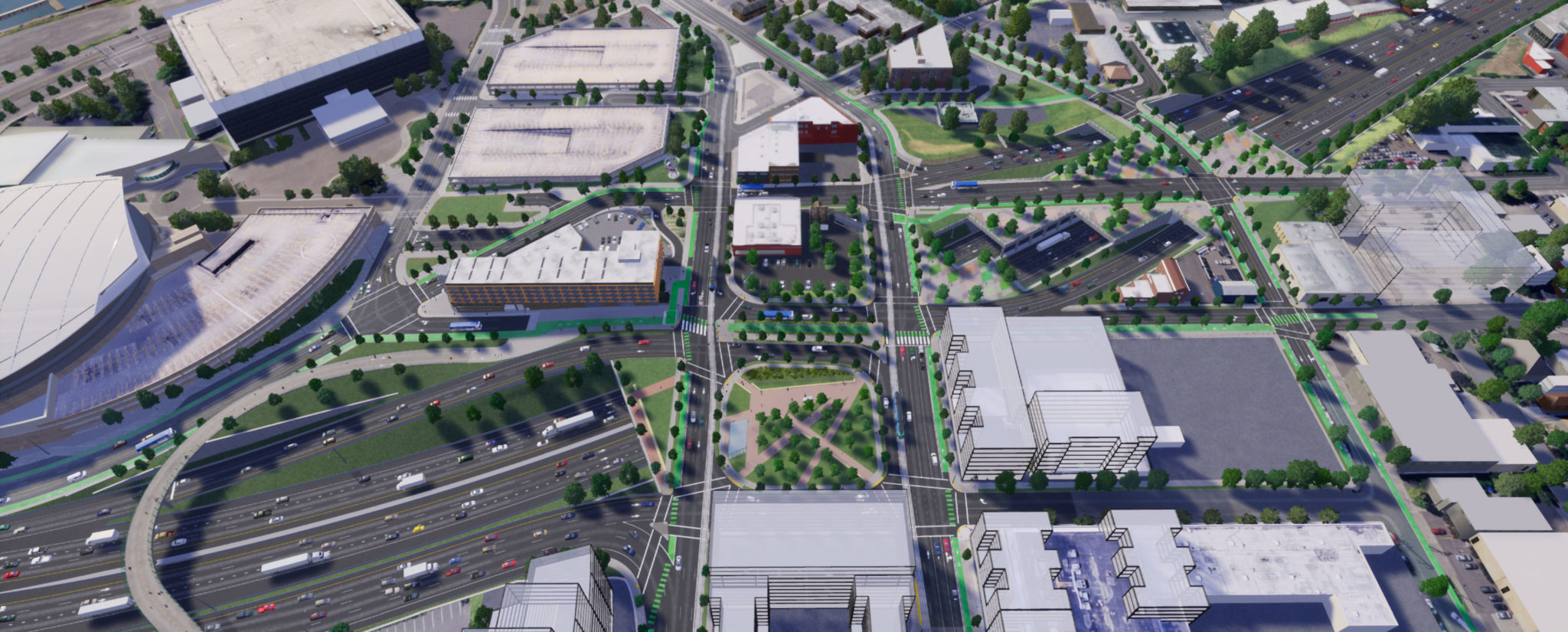
Still three years away from the beginning of construction, the I-5 Rose Quarter Expansion project in Portland, Oregon, is moving forward, despite concerns about budget increases and environmental impact.
Once the crown jewel of the Oregon legislature, the I-5 expansion was supposed to free up congestion for around $450 million. But since the legislature approved the project in 2017, the project has seen its price tag almost double and nearby residents raised concerns about what kind of an environmental impact the project would have, among other things.
The project would add auxiliary lanes and shoulders to one of the most congested stretches of road in the country. In addition, the project would include a highway cover for park space, as well as bicycle and pedestrian paths and connections between areas of the city previously cut off by I-5.
Officials say the expansion would provide $732 million in economic benefits each year, through more efficient movement of goods, and provide an economic catalyst for a predominantly African-American community. The expansion will also make the 1.7 mile stretch of road safer.
“The segment of I-5 between I-405 and I-84 incurs 3.5 times more crashes than the statewide average and has some of the highest traffic volumes in the state (12 hours of congestion each day),” the project’s Cost to Completion report said. “The Project’s auxiliary lanes and wider safety shoulders will reduce frequent crashes and save drivers nearly 2.5 million hours of vehicle delay each year.”
Numbers provided by the Oregon Department of Transportation (ODOT) put the project’s real cost now at between $715 million and $795 million, or roughly $420.5 million to $468 million per mile.
“The preliminary estimate for the project was provided in 2017. That was provided to the legislature as a way to gauge how much funding we would need,” said April DeLeon, spokesperson for ODOT. “The legislature understood that we did not have any real design parameter, or what that would entail, so the legislature knew that and asked us to come back with an actual cost report back in February.”
DeLeon said the new cost estimate had a 70 percent certainty of coming in at or below the new figures. But that price tag only includes what was in the original design, DeLeon said. Community members have said that they would like to see multi-story buildings on the highway cover, which would entail a much different design, she said.
And the commission has taken that concern into consideration.
“One of the things we’re doing is hiring a third party or consultant team to evaluate the highway cover design as it has been approved,” she said. “The third party or consultant team would need to evaluate the design to determine what it might entail to construct stronger highway covers, what kind of right-of-way and scope and cost would we be looking at as well as the feasibility of multi-story buildings in the area. Can the market support multi-story buildings in that area and is that something the community wants to see in that area?”
Additions like the stronger highway covers could nudge the price tag on the project up to $1 billion, critics say.
Some legislators and other area elected officials have asked how the project would be paid for. DeLeon says the commission is looking at everything from tolling to grant money.
“Right now, everything is on the table. There are lots of different options for the funding gap in this project,” she said. “We are looking at local, state and federal dollars. We are looking at grant funds. This project being the 28th worst bottleneck in the country is a shoo-in for grant funds. So that could be an option, but it’s going to depend on discussion with our partners, it’s going to depend on the commission as well as the legislature to understand the strategy to fund the gap.”
Other concerns have been raised about the construction’s environmental impact. While the commission released an environmental assessment in 2019, public concerns after its release led the commission to pause environmental processes until stakeholders could come together to coordinate over specific community concerns, she said.
One concern was the impact on the air quality the expansion will have. The expansion project will only ease congestion for a short while, critics argue, and lead to even more people using the stretch of road. Others are concerned that it would create air quality problems at Harriet Tubman Middle School located near the interchange.
“That coordination has already begun and the Oregon transportation commission has stated that they will be making a decision on the environmental path forward at their March meeting, on March 19 and 20,” she said. “Right now, we have received direction from the Oregon Transportation Commission, to guide us in coordinating with stakeholders and the community at large and to conduct what the commission calls a peer review of our air quality report and environmental assessment. That is currently in motion.”
Whatever decisions come from that meeting would not preclude what the federal highway commission decides, however. What will be decided is whether the commission needs to enhance its scope and analysis for the project which could become an environmental impact statement for the federal highway commission.
The project is expected to begin construction in 2023.